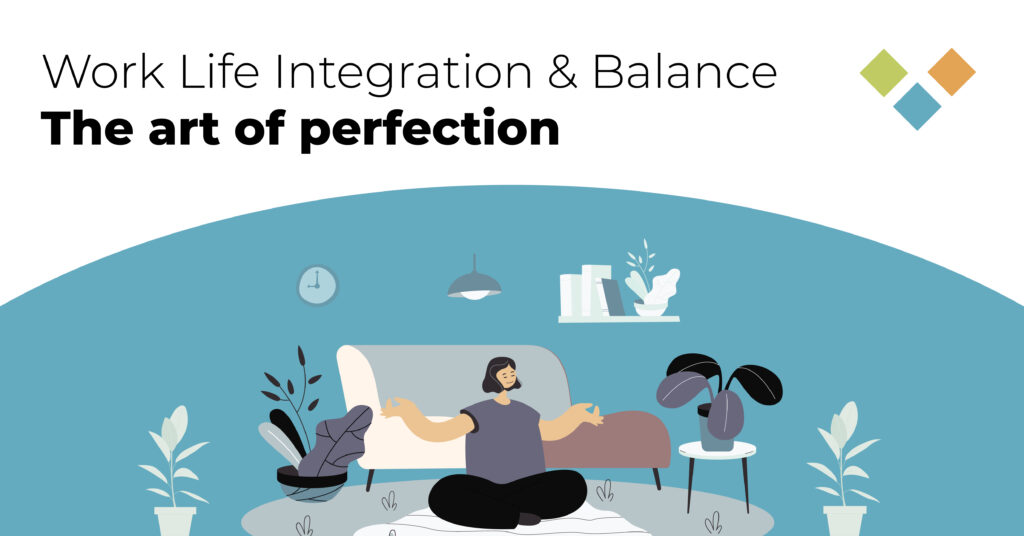
In today’s fast-paced and interconnected world, finding the right balance between work and personal life has become increasingly challenging. As employees strive for success in their careers, it is crucial for organizations to recognize the importance of work-life balance and integration. This blog explores the concept of work-life balance, its benefits, and practical strategies to achieve it. From an HR standpoint, fostering a healthy work-life balance is not only essential for employee well-being but also contributes to increased productivity, engagement, and overall organizational success, BTS recognizes the need and caters to it in this blog!
Work-Life Integration and Work-Life Balance: Definitions, Differences, and Which Is Better?
Definition:
Work-Life Balance: The state of equilibrium in which individuals can effectively manage their professional responsibilities and personal life commitments is referred to as work-life balance. It entails dividing one’s time and energy between work-related activities and personal pursuits including family, hobbies, and self-care.
Work-Life Integration: Work-life integration focuses on developing a seamless blend of work and personal life, with less defined borders between the two. It entails integrating personal interests and priorities into work routines, as well as vice versa, allowing for a more flexible and integrated approach to managing both realms.
Differences
Approach
Work-life balance suggests a clear separation between work and personal life, striving to maintain distinct boundaries and allocating time and energy separately. In contrast, work-life integration promotes a more fluid approach, where work and personal life are intertwined and complementary, allowing for simultaneous engagement in both.
Boundaries
Work-life balance emphasizes setting boundaries to ensure that work and personal life do not encroach upon each other excessively. It seeks to prevent work from overwhelming personal life and vice versa. Work-life integration blurs the boundaries between work and personal life, allowing for flexibility in managing both domains simultaneously.
Similarities
Individual well-being
Work-life integration and work-life balance both strive to improve individual well-being. They understand the value of making time for personal fulfilment, relationships, and self-care, and they understand that a healthy balance of work and personal life is critical for overall satisfaction and happiness.
Flexibility
Both ideologies advocate for flexibility in balancing work and personal commitments. They recognize that inflexible schedules and an imbalance between the two realms can result in stress, burnout, and decreased overall productivity. Both approaches recognize the importance of adaptation and tailoring approaches to individual needs and situations.
Work-life balance refers to the equilibrium between work-related responsibilities and personal commitments. On the other hand, work-life integration focuses on creating synergy between work and personal life, blurring the traditional boundaries and allowing individuals to incorporate their personal priorities into their work routine. An article by Harvard Business Review quotes that achieving a harmonious balance between the two is crucial for sustainable professional and personal growth.
Benefits of Work-Life Balance
Enhanced well-being
A healthy work-life balance boosts mental and physical well-being while lowering stress and increasing happiness.
Increased productivity
When employees have time to recharge and pursue personal interests, they return to work revitalized and inspired, resulting in increased productivity and creativity.
Increased engagement and retention
Organizations that prioritize work-life balance are more likely to recruit and retain top talent because employees feel valued and supported in managing their personal lives in addition to their professional responsibilities.
Employees who can maintain a healthy work-life balance are more likely to be content with their jobs and demonstrate higher levels of job satisfaction.
Employer brand enhancement
A reputation for supporting work-life balance can make a company more appealing to prospective employees and contribute to a favourable employer brand image.
Practical Strategies for Work-Life Integration and Balance
Flexible work arrangements
By providing flexible work choices such as remote work, flexible hours, or reduced workweeks, employers can help employees effectively combine their personal and professional duties.
Clear communication and expectations
Encourage managers and staff to communicate openly and transparently in order to set realistic expectations and define objectives. This clarity promotes a common understanding of job needs and personal obligations, “How to Make Work-Life Balance Work” by Nigel Marsh gives a fantastic example of the following.
Encourage time management skills
Provide staff with training or resources to assist them build effective time management skills, allowing them to prioritize activities, delegate when appropriate, and avoid burnout.
Encourage breaks and vacations
Encourage employees to take regular breaks during the workday and utilize their vacation time fully. Recognize that time off is crucial for rejuvenation and personal well-being.
Support well-being initiatives
Implement well-being programs that focus on physical fitness, mental health, and stress reduction. Provide access to resources like meditation or yoga classes, employee assistance programs, and workshops on work-life balance.
Lead by example
Encourage managers and leaders to demonstrate a healthy work-life balance themselves. When employees see their leaders prioritizing their well-being, they are more likely to feel empowered to do the same.
Conclusion
Work-life balance and integration are crucial considerations for organizations seeking to create a supportive and engaging work environment. As an HR professional, it is important to recognize the benefits of work-life balance, implement practical strategies, and provide resources that empower employees to achieve a harmonious integration of their personal and professional lives. By prioritizing work-life balance, organizations can foster employee well-being, drive productivity, and contribute to long-term success.

